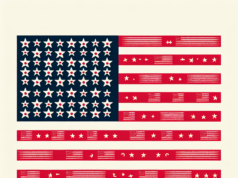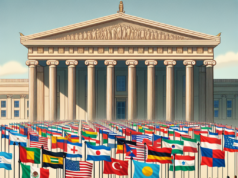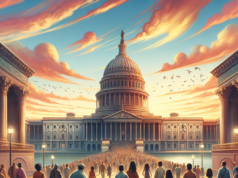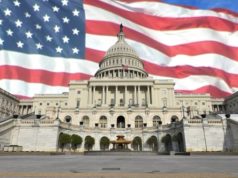
The Chinese Exclusion Act of 1882: A Historical and Contemporary Analysis
Introduction
In 1882, the United States Congress passed the Chinese Exclusion Act, which suspended the immigration of Chinese laborers into the United States for 10 years. This act marked the first time that the United States had restricted immigration based on nationality and race and paved the way for further exclusionary measures targeting different groups of immigrants. In this article, we will analyze the historical context of the Chinese Exclusion Act, its social and political impact, and its relevance to contemporary debates on immigration.
Historical Background
The Chinese Exclusion Act was the result of decades of tension between Chinese immigrants and American laborers. In the mid-19th century, Chinese immigrants were welcomed as cheap labor for the rapidly expanding American economy. By the 1870s, however, anti-Chinese sentiment began to grow as labor unions and political groups blamed Chinese immigrants for low wages, unemployment, and social problems.
The perceived threat of the “Yellow Peril” fueled the anti-Chinese movement, which gained significant political influence in California, home to the largest Chinese immigrant population. Political leaders such as Governor John Bigler and Denis Kearney, leader of the Workingmen’s Party of California, called for the exclusion of Chinese immigrants and for the protection of American workers from foreign competition.
The Chinese Exclusion Act
On May 6, 1882, the US Congress passed the Chinese Exclusion Act, which banned the immigration of Chinese laborers for 10 years. The act also prevented Chinese immigrants from becoming naturalized citizens and mandated the deportation of Chinese immigrants who had entered the country illegally. The act was renewed in 1892 and made permanent in 1902.
The act was a response to the perceived economic threat of Chinese labor and the anxiety produced by the “Yellow Peril” discourse. However, it also reflects broader themes in American politics, including nativism, racism, and the desire to establish boundaries around who is considered a “legitimate” American. The Chinese Exclusion Act was only the first of many exclusionary measures that targeted immigrants from different parts of the world and demonstrated the intersection of immigration and racism in American society.
Social and Political Impact
The Chinese Exclusion Act had a significant impact on Chinese immigrants and American society as a whole. Chinese immigrants faced significant discrimination, violence, and segregation across the country. In California, where most Chinese immigrants lived, they were forced to live in segregated neighborhoods and subjected to frequent raids by immigration officials.
The act also produced significant diplomatic tensions between the United States and China. The Chinese government viewed the act as a violation of its sovereignty and its citizens’ human rights. The United States would eventually pay reparations to China under the terms of the Burlingame Treaty of 1868.
The Chinese Exclusion Act also had significant social and political repercussions within the United States. The act cemented the idea that certain groups of people were inherently undesirable and undeserving of American citizenship. This idea would be used to justify other exclusionary measures targeting groups such as Japanese, Filipinos, and Mexicans.
Following the Civil War, the nation as a whole began to enact a more specific immigration policy. Different trends of immigration caused some previous generations of Americans to rethink immigration policies of the time, and put in place actual restrictions in addition to other considerations.
National sentiment towards immigrant labor sat at the root of many of these anxieties and started to influence immigration policy on a large scale. This process of granting freedoms only to drastically remove them, became a usual practice in American immigration policy. The end Civil War, which granted rights to former slaves was met in the next decades with political posturing that responded to national outcries for stricter race-based immigration policy.
Immigration policies subsequent to the end of the Civil War illustrated a central change in the way the nation responded to immigrants. As the job market went through cyclical changes, older-generation Americans became furious over the loss of occupation to new immigrants. Perceptions of these new workers continued to worsen as many immigrants would demand lower wages and would also be used for replacement labor in response to strikes.
The first of the immigration policies dealing with specific types of restrictions came in 1875. In response to the aforementioned national mood towards immigrants, this immigration policy was the first to prevent the immigration of specific types of people. This would be important precedent for future pieces of legislation that would further the idea of race-based immigration policy.
A gross example of immigration policy in the nineteenth century is referred to as the Chinese Exclusion Act that was passed in 1882; an act that instituted harsh restrictions on both the immigration and naturalization of Chinese immigrants. It was originally passed with a time constraint permitting its jurisdiction for a span of ten years.
Later immigration policies would uphold the ruling of the Chinese Exclusion Act, by instating an effectual block of Chinese immigrants from coming to the country, in addition to denying the naturalization of Chinese immigrants already in the country for nearly a century.
Another legislative act passed in 1882 initiated further restriction of who could enter the country and put in place a 50-cent tax for all immigrants traveling to America. American immigration policies from this point reflected the overall growth of the nation and a certain air of privilege when it came to choosing who would be able to immigrate to the country.
Immigration policies would grow from this point on to make the process of immigration much more difficult, if not impossible for certain types of people. An act in the early 1900s would make the Chinese Exclusion Act permanent until it would be finally repealed in the 1940.
























